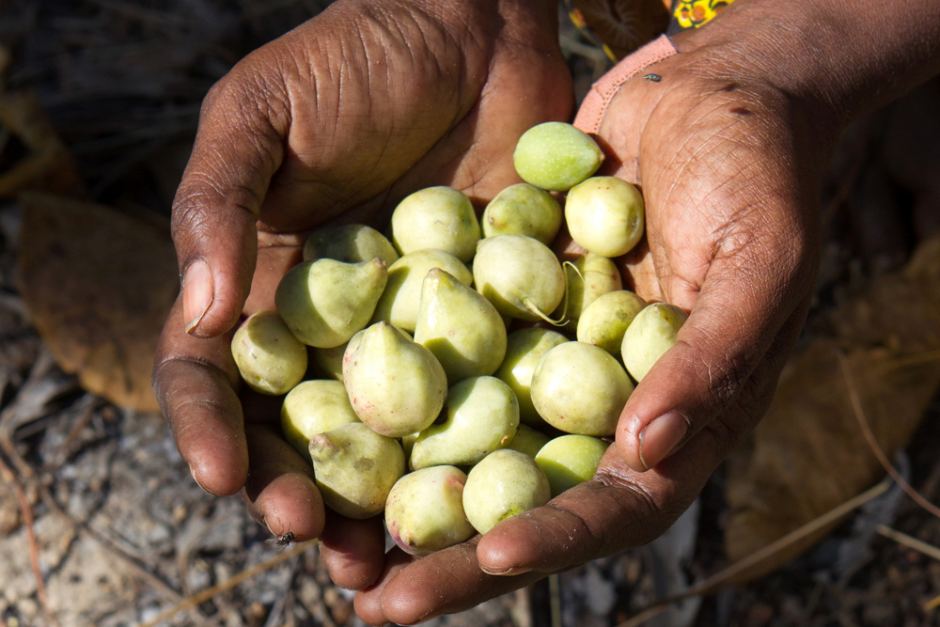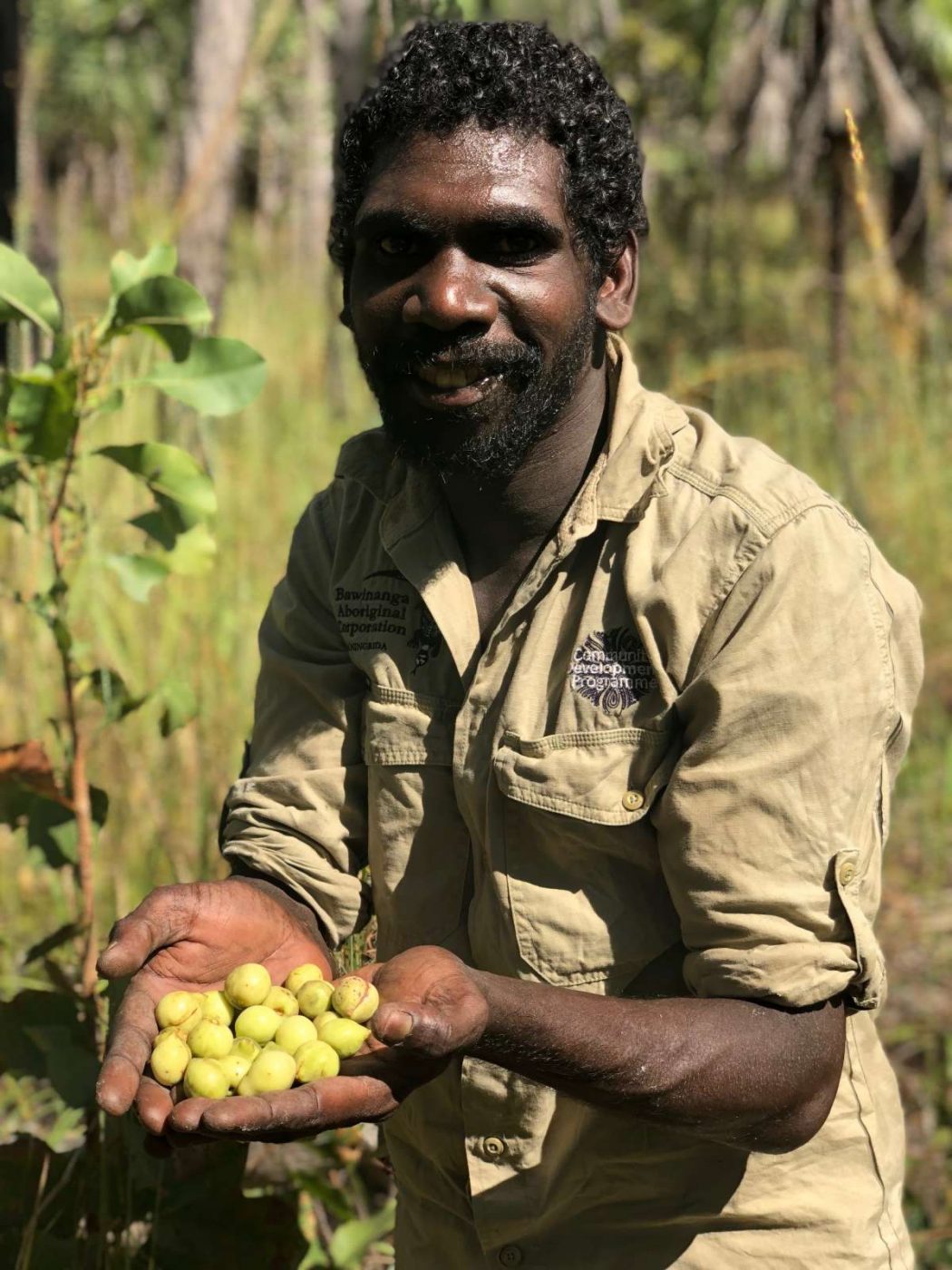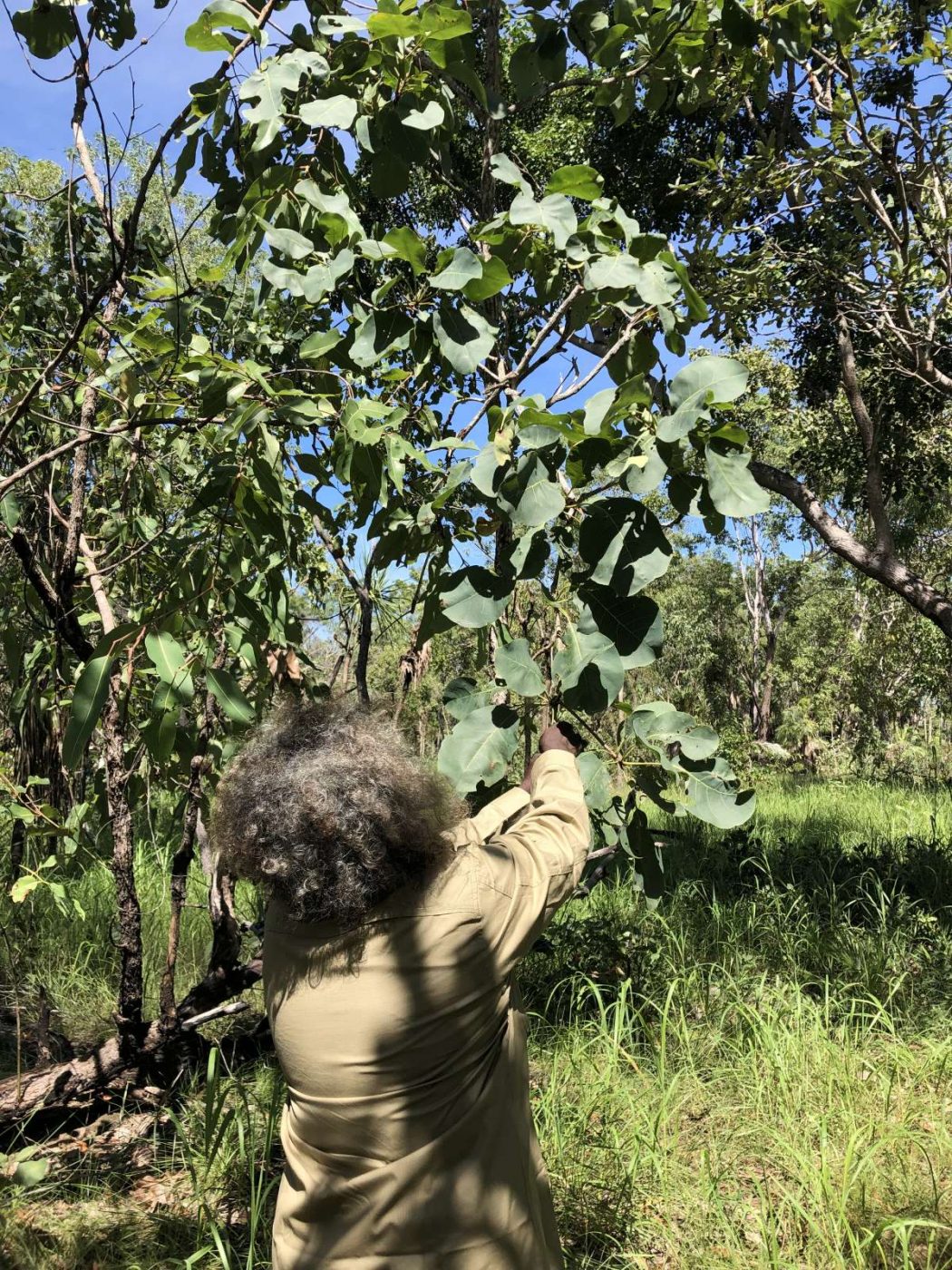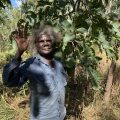



Manmarlak Kakadu plum
Although our home in Arnhem Land is outside of the Kakadu National Park, our people also enjoy this internationally recognised superfood which grows in abundance here on our ancestral lands.
High in energy and Vitamin C, they’re known to our community as a favourite with children, who would climb trees and fill their dilly bags (woven shoulder bags) with fruit to bring back to camp.
They grow both on high trees and on low shrubs: we have tested both varieties and they have the same chemical composition.
Traditionally they’d be eaten fresh, but nowadays, the possibilities are endless; the refreshing, slightly salty fruit has been made into jams, powders, teas, and even used as a skincare products.
They are harvested throughout cooler months, once the rains finish in March, through to July.
In our culture, much of our world belongs to one of two halves or moieties: Duwa and Yirridjdja. This includes all human beings, ancestral beings, flora and fauna, natural phenomenon, sites and land – it’s all connected together.
Kakadu Plum is classified under this system as Duwa.

I remember our parents gave them to us one day when we went hunting. They saw how much it gave us energy and we were laughing and playing. Later that night they brought us more, and we lay there learning about the milky way and eating those Kakadu Plums.
Leila Nimbadja
